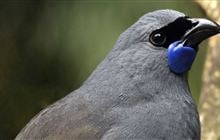Great spotted kiwi/roroa
Introduction
The giant among kiwi, this species lives only in the top half of the South Island.New Zealand status: Endemic
Conservation status: Threatened–Nationally Vulnerable
Population: 14,000
Found in: Sub-alpine zones of North West Nelson, the Paparoa Range, and Arthur’s Pass
Threats: Predation
Species information: Great spotted kiwi on NZ Birds Online
The largest of our kiwi species, great spotted kiwi/roroa (Apteryx haastii) live largely at higher altitudes in some South Island national parks. Despite their size, chicks are still vulnerable to stoats, particularly during South Island beech mast conditions. The species is though to be declining at a rate of 1.6% each year.
They inhabit about 800 000 ha of remote, generally mountainous habitat in the top half of the South Island. They form four genetically distinct populations: Northwest Nelson, Westport, Paparoa Range and Arthur’sPass–Hurunui.
Trampers on the Heaphy Track may have heard the trilling call of roroa after nightfall, or the sound of them rustling through the bush. Although present from sea level to 1,500 metres, they mainly frequent the subalpine zone of 700-1,100 metres, using a wide variety of habitats.
This chosen harsh environment could be one of their best defences against predators - conditions are tough even for a stoat, dog or cat.
At nesting time, incubation is more or less shared equally between the male and female parents.
Species plan
Roroa/great spotted kiwi (Apteryx maxima) species plan 2019–2029 (PDF, 2,650K)
There are three long-term recovery goals for roroa:
- to grow all four populations by an average of at least 2% per annum
- to expand the distribution of the species across its former range, and
- to maintain the genetic diversity of the species.
These goals will be achieved primarily through the periodic suppression of animal predators, especially mustelids. Aerial control methods will be used cross large areas with complementary ground trapping as required. Engagement and advocacy actions can also reduce the risk of predation by dogs and to minimise the effects of land-use activities.
The removal of eggs and chicks through Operation Nest Egg, translocation, kōhanga sites and captive breeding are considered low-priority actions for roroa because they will not contribute significantly to these recovery goals.
Actions have been identified to ensure that the limited resources of all those involved in roroa management and research are directed towards the highest priority areas.

